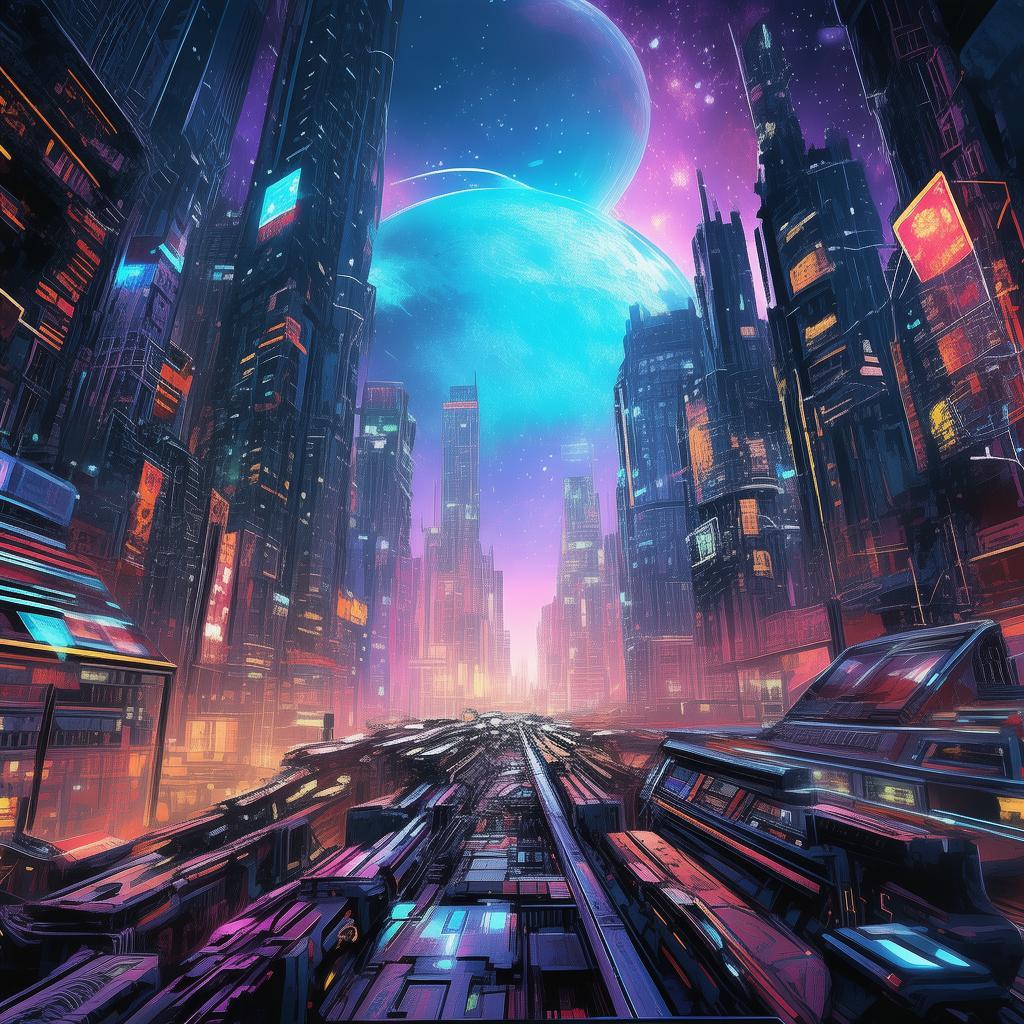The Andromeda Conundrum: Van Diesel's Interstellar Riddle
In the year 2147, humanity had ventured beyond the confines of Earth, colonizing planets and charting the vastness of space. Among the countless explorers was Van Diesel, a renegade astronaut with a reputation for pushing the boundaries of what was possible. His latest vessel, The Andromeda, was a marvel of engineering, capable of traversing the stars with ease. Yet, for Van Diesel, the stars were not just points of light in the night sky—they were the keys to unlocking the mysteries of the universe.
The Andromeda was en route to a distant planet when it detected a signal. It was faint, almost imperceptible, but it was there, emanating from the Andromeda Galaxy, a distant and enigmatic constellation. Van Diesel, intrigued by the signal, ordered the ship to alter its course and investigate.
The crew of The Andromeda was a diverse group of individuals, each with their own reasons for joining the voyage. Captain Elara Quinn, a former marine, was driven by the thrill of exploration. Dr. Marcus Chen, a brilliant physicist, sought the answer to the universe's greatest mysteries. And there was Aiden, a young engineer, whose dream of seeing the stars was as vivid as his desire to return to Earth.
As The Andromeda approached the source of the signal, the crew was greeted by a stunning sight: a colossal structure, floating in the void of space. It was unlike anything they had ever seen, a fusion of technology and art that seemed to defy the laws of physics. The structure was a massive, intricate array of interlocking cubes, each one pulsating with energy.
"Captain, I think we've found it," Dr. Chen reported, his voice tinged with awe.
Van Diesel, standing on the bridge, peered through the viewport. "A message from the ancients," he mused. "But what message?"
The crew, led by Elara, approached the structure cautiously. As they drew closer, they noticed a series of symbols etched into the surface of the cubes. They were unlike any language they had encountered, but there was something familiar about them.
"Captain, I can't make out the symbols, but they seem to be moving," Aiden said, his eyes wide with excitement.
Van Diesel stepped forward, placing his hand on the surface of the structure. A holographic display materialized before him, revealing a series of riddles. The first riddle was simple yet profound: "What has keys but can't open locks?"
Elara chuckled. "A piano, Captain."
Van Diesel nodded. "Precisely. But this is not a riddle about a piano. It's a riddle about the universe itself."
The next riddle was more complex: "I have no head, no legs, no eyes, no mouth, but I can walk. What am I?"
Aiden's brow furrowed in concentration. "A road?"
Dr. Chen shook his head. "No, it's not a physical object. It's a concept."
Elara, realizing the riddle's depth, exclaimed, "It's a path! A journey!"
The riddles continued, each more challenging than the last, forcing the crew to think outside the box. The riddles were not just about the universe; they were about humanity's place within it. They were about the journey of life, the pursuit of knowledge, and the quest for understanding.
As they worked together to solve the riddles, the crew's dynamic shifted. They became a team, bound by a common purpose. Each riddle they solved brought them closer to understanding the true nature of the signal and the structure itself.
The final riddle was the most challenging of all: "I am not alive, but I can grow. I do not have lungs, but I need air. I do not have a mouth, but water kills me. What am I?"
The crew exchanged glances, each trying to decipher the enigmatic question. Elara, her mind racing, finally said, "It's a fire! A fire is not alive, but it can grow. It needs air to thrive, but water can extinguish it."
Van Diesel smiled. "You're correct. But this is not just a riddle about fire. It's a riddle about the universe's most fundamental force."
As the final riddle was solved, the structure began to change. The cubes started to rearrange themselves, forming a new pattern. A message appeared, written in a language that was both ancient and modern.
"It is written," Van Diesel read aloud, "that the universe is a riddle, and we are the keys. Together, we can unlock its secrets and find our place within it."

The crew stood in awe, realizing the significance of what they had discovered. The Andromeda Conundrum was not just a riddle; it was a calling. It was a reminder that humanity's journey through the stars was just beginning.
As The Andromeda continued its journey, the crew's eyes were fixed on the stars, their hearts filled with hope and wonder. They had found the keys to the universe, and they were ready to unlock its secrets.
The Andromeda Conundrum: Van Diesel's Interstellar Riddle was not just a voyage of discovery; it was a journey of self-discovery. It was a story of unity, of the power of collaboration, and of the endless possibilities that lay beyond the stars.
✨ Original Statement ✨
All articles published on this website (including but not limited to text, images, videos, and other content) are original or authorized for reposting and are protected by relevant laws. Without the explicit written permission of this website, no individual or organization may copy, modify, repost, or use the content for commercial purposes.
If you need to quote or cooperate, please contact this site for authorization. We reserve the right to pursue legal responsibility for any unauthorized use.
Hereby declared.









